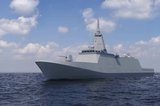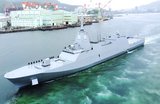USCG orders Sentinel-class cutters
Bollinger Shipyards has been awarded a contract from the US Coast Guard (USCG) worth an initial $318.6 million for six Sentinel-class fast response cutters (FRCs), the USCG announced on 4 May.
The contract covers procurement of up to 26 cutters with a potential value of $1.42 billion if all options are exercised. If all 26 cutters are ordered, there would be 58 FRCs on order in the USCG's Program of Record.
The USCG is acquiring the FRCs to upgrade its near-offshore patrol capabilities for missions such as fishery patrols; national defence; search and rescue; waterways, ports and coastal security; and drug and migrant interdiction.
The FRCs have a length 154ft, a maximum speed of 28kts, and range of 2,950nm. The ships will feature new C4ISR equipment, improved seakeeping and habitability and a stern cutter boat launch to reach vessels of interest.
A total of 16 FRCs are currently in service, with the 17th scheduled for commission later this month.
More from Naval Warfare
-
![NATO tests use of “undetectable, jam-proof” laser communication in maritime scenarios]()
NATO tests use of “undetectable, jam-proof” laser communication in maritime scenarios
As part of its effort to better prepare its capabilities for operations in contested and congested scenarios, NATO evaluated a Lithuanian ship-to-ship terminal designed to not be susceptible to enemy interference.
-
![US Navy advances with the Harpoon Service Life Extension Programme]()
US Navy advances with the Harpoon Service Life Extension Programme
The US Navy plans to improve Harpoon’s anti-ship and land attack capabilities by equipping the missiles with sensors and technologies required for succeeding in future battlespace.
-
![Mitsubishi eyes future with Australia’s Mogami selection]()
Mitsubishi eyes future with Australia’s Mogami selection
With Australia’s selection of the Mogami-class for Project Sea 3000, Mitsubishi is investigating local production in the next decade as potential export opportunities emerge.
-
![Thales’ new Sonar 76Nano could equip UK Royal Navy on anti-submarine warfare missions]()
Thales’ new Sonar 76Nano could equip UK Royal Navy on anti-submarine warfare missions
The new sonar is designed to equip uncrewed underwater vessels, with the potential to be used by the Royal Navy for its Atlantic Bastion and Atlantic Net missions.
-
![Hanwha wins Australian government approval to increase its stake in Austal]()
Hanwha wins Australian government approval to increase its stake in Austal
The contract would mean the two shipbuilders can collaborate strategically and enhance shipbuilding capabilities in Western Australia.























